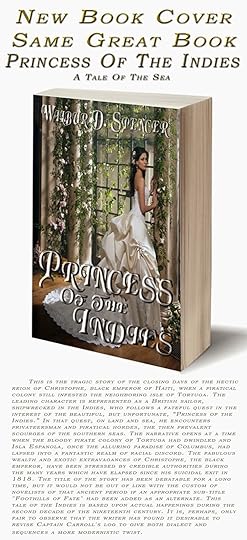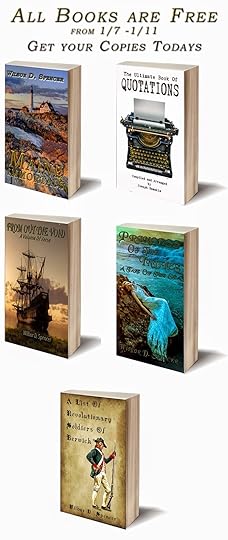Joseph Demakis's Blog, page 11
November 22, 2015
How to Set SMART Writing Goals
How to Set SMART Writing Goals
One of the most important things writers (or anyone) can do is set clear, explicit goals about what they want to accomplish. Most of us have a bunch of vague goals, like the "one day novel" (as in, "one day, I'm going to write a novel). We want to "someday" do x, y, and z - get a big magazine assignment, find an agent, finish our book - but without clear goals, we don't seem to make any progress. We chug along, picking at our huge projects, rarely coming any closer to finishing, and we feel horrible about ourselves.

If you don't set goals, you won't achieve them.
There are a lot of reasons people don't set clear goals. Most of them boil down to a fear of commitment - and of letting ourselves down when we fail to live up to that commitment. Saying "I'm going to finish my novel" sets us up for failure. What if I don't have any ideas? What if some life crisis happens and I can't finish? What if, like the main character in Wonder Boys, I have too many ideas, and it just keeps growing and growing and growing...? What if something better comes along?
And on and on. We have a million ways of talking ourselves out of committing to achievement. So we avoid the commitment. We keep our options open. We dally.
As anyone who's ever been in a romantic relationship without commitment knows, this is a recipe for disaster. In fact, it's a pretty good analogy, because an author's relationship with a work in progress is a lot like your relationship with your significant other. You have to work at it every day, and nurture it, and accept its quirks and even failures. And if you lack real commitment, sooner or later, one or the other of you will flake out.

SMART goals are easier to achieve than dumb ones.One reason goal-setting is so daunting is because we don't know how to set good goals. We set vague, unspecified, open-ended goals - goals with precisely the same faults we mercilessly strike from our writing. "Someday", "eventually", "when inspiration strikes", "as the Muses allow" - these words and phrases need to be banished from your goal-setting vocabulary. What you need are crisp, clear, specific goals.
SMART goals.
The idea of the SMART goal was conceived by a business psychologist named George Doran. SMART is an acronym, standing for goals that are:
SpecificMeasurableAchievableRelevant, andTime-bound.
Let's look at these elements one by one:
S - Specific. Set goals with specific outcomes. Avoid loose language. Ex: "Write story for publication"
M - Measurable . Set concrete goals that you can keep track of - and keep track of them! Ex: "Write 20,000 word story for publication"
A - Achievable . Set realistic goals that you're prepared to pursue. 30,000 words in a month is reasonable. 50,000 is pushing it. 120,000 words is almost impossible - and when you fail to meet it, you'll feel bad about yourself.
R - Relevant . Set goals that matter to you, that will have a positive effect in your life.
T - Time-bound . Give yourself a deadline to create a sense of urgency and keep you focused on the task at hand. Ex: "Write 20,000 word story for publication by August 31"
A bad goal - but the kind we are most comfortable committing to - is something like "Write more."
That's a dumb goal - more than what? How will you know if you're writing more? How much more? When should you write more - tomorrow? Next week? Someday?
A SMART goal would be "Write 1,000 words a day every weekday between now and September 15th." You know when to start - "now" - and you can easily track your progress - just write down daily word counts. If they're less than a thousand, don't stop writing that day!
Here's another dumb goal: get novel published. It's too big, too unspecific - it doesn't suggest any action. Every day, you'll say to yourself, "Oh, right. I really ought to get that novel published!" and then go back to surfing the Internet, watching TV, or playing Wii.
Instead, set a series of SMART goals:
Write a proposal for my novel by July 30th.Identify 10 likely agents for my novel by August 7th.Send copies of proposal to 10 agents by August 15th.
Even that might not be granular enough - maybe you're not prepared to write the proposal (it's not achievable). Maybe you need to:
Research how to write a book proposal by July 20th.Brainstorm 20 promotional ideas for book by July 22nd.Identify 20 magazines that would be likely to review my novel by July 25th.
Of course, I've taken for granted that publishing your novel is relevant to you, and if you're a writer, it probably is. But you have to think about whether a goal is relevant, and how, every time, or you won't have the necessary motivation to complete the goal. It's boring researching competitor's books for a book proposal - but if you want to publish that novel, then doing the legwork becomes incredibly relevant.
Make sure you have some way of keeping track of your goals. For daily writing goals and the like, I like the idea of keeping a white board by your desk and writing daily word counts after every writing session. But a notebook, diary, computer file, or anything else will work fine. Maybe you can start a "goal diary" - a nice-looking notebook that you can write goals in, one per page, and track progress in as needed.
Whatever you decide to use, make sure you keep on top of it. Accountability, even just to yourself, is key - both so you can feel good about your project (especially in the middle of a big project that seems like it will never end) and so you can identify hang-ups and other problems that are keeping you from accomplishing your goals.

By Dustin Wax
Published on November 22, 2015 05:48
Tips for Writing Your Author Bio
Tips for Writing Your Author Bio

To many, writing an author bio is an enigma wrapped in a riddle buried with Blackbeard's treasure. It's hard to know what is and isn't relevant. What sets one author bio apart from another? Does work experience count? Is it accolades that matter most? What about education - does that make a difference? How can you express who you really are while meeting readers' expectations of you as an author?
The task of writing an author bio can be daunting because it is more than just information about the author. It is a crucial element in your branding strategy. How you present the information is as important as what you are presenting. Your bio is something many readers will see before ever reading your book, so its tone and verbiage may lead them to make assumptions about your book's contents.
The task of writing a bio isn't daunting if you know where to start and how to finish. Let's get started with some basic guidelines.
Basic Guidelines to Writing an Author Bio
Distance Yourself. Get ready to embrace your multiple personalities, because your author persona is not writing your author bio. Your marketing persona is. You have to completely separate yourself from the author within and approach your bio from the third person. If a reader sees the pronoun "I" in a bio, he or she is likely to deduce that it's self-indulgent and amateurish.
You Are Your Genre. Before you write your bio, you must commit to a genre. It's important to understand what kind of book you have written in order to reflect readers' expectations. If you've written a dark horror novel, a bright, perky description of the author isn't going to help you reach your target fanbase.
Always Be Branding. The author bio is essentially your business card. What do you usually find on a business card? Contact information. If you haven't given readers some way to get in touch with you, you missed the opportunity to interact with a fan, and interaction means everything in today's hyper-connected world. Give them a web address. Tell them where to find you on Facebook and Twitter. You could even create an email address specifically for fan email. Give them access to you, even if it's just virtual access.
Keep It Brief . Brevity is the soul of wit. Even if you're William Shakespeare, you don't want to write an author bio that fills up the entire back cover. In an odd twist of logic, the more accomplished you are as an author, the shorter your author bio can be. Pick up a Stephen King or Cormac McCarthy novel and you're likely to see an author bio that's about 25 words. Pick up a book by an author you've never heard of, and you might see a bio that's 125 words. The more established the brand, the shorter the bio. If you have no brand recognition yet, I suggest targeting a word count of 75, with a 10-word cushion on either side of your target.
Be Humble . Establish a sense of humility to connect with the reader. In your bio, you are laying out a case to readers about why they should choose your book over another author's. Chances are, you have competition out there, so you have to walk the fine line of setting yourself apart without being a braggart.
Get Personal . Including some personal information in your bio is a good thing. If you have two kids and a dog that are very important to who you are as human, include that information. Personal facts are a nice complement to all those incredible achievements you've included; it gives you depth and helps you make an emotional connection with the reader. If your list of achievements is somewhat lacking, the personal information that makes you who you are can more than make up for it.
Fiction vs. Nonfiction . There are key differences to writing an author bio for a fiction book and a nonfiction book. Nonfiction relies heavily on an author's credentials as it pertains to the book's subject matter, even if that subject matter is a memoir. How the author is an authority on the material is extremely important. Credentials for fiction writers can be important in the mystery and suspense genres. For example, an ex-police officer who pens a mystery novel can make a great impression on readers. However, one's education and experience outside of the world of writing is far less important in the fiction category. Bios for fiction authors might do well to focus on the personal aspects highlighted above.
Those basics will get you started thinking about how you will write your author bio. Remember, your author bio is a part of your brand, so make sure it is a reflection of who you really are as an author.
By Richard Ridley
Published on November 22, 2015 04:44
How to Write an Effective Book Description
How to Write an Effective Book Description
One of the most crucial elements to selling a book is also probably the most difficult element to create for authors. The book description is your lead in, your chance to hook a reader and get them to crack the cover and satisfy their curiosity. Even in an online environment, the book description can bridge the gap between having just another title among a sea of choices and a saleable book worth reading. The problem is that many authors have a hard time writing a good book description. The main reason it can prove so difficult is because they don't want to leave anything out. As the creator of the material, there's a natural instinct to find a way to cram all or as much of that material into the description. But too many details can render your description confusing and ineffective.
 Elements of the Book Description As someone who has failed and triumphed over book descriptions, here is what I have learned through my personal series of trial and error. Call them rules, suggestions or ramblings of an author gone mad, but I've collected these tips by observing and consulting with other authors, both self-published and traditionally published.
1. Don't include subplots.
When it comes to the book description, the only thing that matters is the main plot or main theme. That's all you need to focus on when you sit down to write your book description. Including anything else will send you off into an endless loop of "then this happened" moments that will dilute your book description. What is the primary action that drives your book?
2. Keep it under 150 words.
This, no doubt, will elicit some moans and groans by a lot of authors. Summarizing a book that consists of tens of thousands of words to just 150 is impossible, right? No. In fact, I am of the belief that you should be able to summarize your book in a single short sentence. Remember, you don't have to concern yourself with the character development and sub-plots, so those tens of thousands of words it takes to adequately draw a reader into a book aren't necessary when it comes to your book description. In the simplest terms, what is your book about and what will make readers interested?
3. Write in third person, present tense.
Even though your book is most likely told in past tense, your book description is not. You are describing this book as if you're sitting face to face with the reader, and they've asked you what the book is about. You wouldn't speak to them in the past tense. In addition, the book description is told from third person point-of-view even if you've written your book from first person point-of-view.
4. Use emotional power words.
You are trying to evoke emotions with your book description, the same emotions that your book evokes. To convey these feelings, you need emotional powers words like tormented, charismatic, passion, obsession, terrifying, etc. There are too many to mention here, but a quick search for "Power Words" on the internet will produces hundreds of words to choose from. Just be careful not to overdo it. Use power words sparingly and strategically. If I had to put a number it, I'd say in a 125 word description, you'd use 6-10 emotional power words.
5. You are not the author.
You are not writing your book description as the author. You are writing it as the publisher. Making an impact on the reader is your principal concern. What will move the reader to want to know more about your book? What will motivate the reader to add your book to his or her cart? Write the book description with your head, not your heart. Remember, the book description is marketing material - not literature. Those are my five main points when it comes to writing a book description. Another good practice when writing your book description is to read as many book descriptions in your genre as possible. It's a great way to figure out what the industry standard is. These descriptions become industry standards for one reason: they sell books. Here's an example of a book description that I believe gets it right. It's for Gil Adamson's novel, The Outlander, published by Harper Collins in 2007. In 1903 Mary Boulton flees alone across the West, one heart-pounding step ahead of the law. At nineteen, she has just become a widow-and her husband's killer. As bloodhounds track her frantic race toward the mountains, she is tormented by mad visions and by the knowledge that her two ruthless brothers-in-law are in pursuit, determined to avenge their younger brother's death. Responding to little more than the primitive instinct for survival at any cost, she retreats ever deeper into the wilderness-and into the wilds of her own mind. From the description, I know the book is a psychological thriller featuring a young woman on the run from some very nasty people. I get a hint that her husband may have deserved his fate, but I'm also led to believe that Mary Boulton may be mentally unstable. The description is roughly 90 words. It's told in third-person, present tense, and I count seven emotional power words ("heart-pounding," "frantic," "tormented," "mad," "ruthless," "primitive," and "wilds"). I only know the main plot: she killed her husband, and now she's a fugitive running for her life. I picked up the book because of its cover, but I opened the book because of this description. I now own it. You're not just writing your description for your back cover. You're also writing this for your social media network, as part of your bio information for personal appearances, for flyers and other print material, etc. This isn't just for you; it's for your fans. With a concise book description, they are more likely to copy and paste it into an email to friends and family or on their own social networking accounts. Think of this type of description as being portable. It's easy to share and, as a result, is a major tool in your spread-the-word campaign. I will leave you with this: you may get it wrong the first time you try to write a book description, and that's okay. It's just another part of the process. As you go through various versions, don't delete those earlier ones. I've found that by combining the elements of the latest version with earlier versions, I hit pay dirt. Good luck, and happy selling!
Elements of the Book Description As someone who has failed and triumphed over book descriptions, here is what I have learned through my personal series of trial and error. Call them rules, suggestions or ramblings of an author gone mad, but I've collected these tips by observing and consulting with other authors, both self-published and traditionally published.
1. Don't include subplots.
When it comes to the book description, the only thing that matters is the main plot or main theme. That's all you need to focus on when you sit down to write your book description. Including anything else will send you off into an endless loop of "then this happened" moments that will dilute your book description. What is the primary action that drives your book?
2. Keep it under 150 words.
This, no doubt, will elicit some moans and groans by a lot of authors. Summarizing a book that consists of tens of thousands of words to just 150 is impossible, right? No. In fact, I am of the belief that you should be able to summarize your book in a single short sentence. Remember, you don't have to concern yourself with the character development and sub-plots, so those tens of thousands of words it takes to adequately draw a reader into a book aren't necessary when it comes to your book description. In the simplest terms, what is your book about and what will make readers interested?
3. Write in third person, present tense.
Even though your book is most likely told in past tense, your book description is not. You are describing this book as if you're sitting face to face with the reader, and they've asked you what the book is about. You wouldn't speak to them in the past tense. In addition, the book description is told from third person point-of-view even if you've written your book from first person point-of-view.
4. Use emotional power words.
You are trying to evoke emotions with your book description, the same emotions that your book evokes. To convey these feelings, you need emotional powers words like tormented, charismatic, passion, obsession, terrifying, etc. There are too many to mention here, but a quick search for "Power Words" on the internet will produces hundreds of words to choose from. Just be careful not to overdo it. Use power words sparingly and strategically. If I had to put a number it, I'd say in a 125 word description, you'd use 6-10 emotional power words.
5. You are not the author.
You are not writing your book description as the author. You are writing it as the publisher. Making an impact on the reader is your principal concern. What will move the reader to want to know more about your book? What will motivate the reader to add your book to his or her cart? Write the book description with your head, not your heart. Remember, the book description is marketing material - not literature. Those are my five main points when it comes to writing a book description. Another good practice when writing your book description is to read as many book descriptions in your genre as possible. It's a great way to figure out what the industry standard is. These descriptions become industry standards for one reason: they sell books. Here's an example of a book description that I believe gets it right. It's for Gil Adamson's novel, The Outlander, published by Harper Collins in 2007. In 1903 Mary Boulton flees alone across the West, one heart-pounding step ahead of the law. At nineteen, she has just become a widow-and her husband's killer. As bloodhounds track her frantic race toward the mountains, she is tormented by mad visions and by the knowledge that her two ruthless brothers-in-law are in pursuit, determined to avenge their younger brother's death. Responding to little more than the primitive instinct for survival at any cost, she retreats ever deeper into the wilderness-and into the wilds of her own mind. From the description, I know the book is a psychological thriller featuring a young woman on the run from some very nasty people. I get a hint that her husband may have deserved his fate, but I'm also led to believe that Mary Boulton may be mentally unstable. The description is roughly 90 words. It's told in third-person, present tense, and I count seven emotional power words ("heart-pounding," "frantic," "tormented," "mad," "ruthless," "primitive," and "wilds"). I only know the main plot: she killed her husband, and now she's a fugitive running for her life. I picked up the book because of its cover, but I opened the book because of this description. I now own it. You're not just writing your description for your back cover. You're also writing this for your social media network, as part of your bio information for personal appearances, for flyers and other print material, etc. This isn't just for you; it's for your fans. With a concise book description, they are more likely to copy and paste it into an email to friends and family or on their own social networking accounts. Think of this type of description as being portable. It's easy to share and, as a result, is a major tool in your spread-the-word campaign. I will leave you with this: you may get it wrong the first time you try to write a book description, and that's okay. It's just another part of the process. As you go through various versions, don't delete those earlier ones. I've found that by combining the elements of the latest version with earlier versions, I hit pay dirt. Good luck, and happy selling!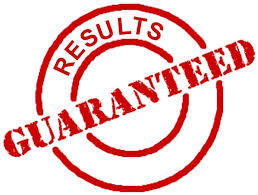
by Richard Ridley
Published on November 22, 2015 03:54
Are You Giving Readers What They Want?
Are You Giving Readers What They Want?
One of the big challenges of publishing your own books is making sure you know who you're writing for and what they want to read. No matter how much you enjoy writing itself, as authors we have to acknowledge that the whole process works better and is far more enjoyable if we have more readers.
But which readers? This is a lot easier for nonfiction authors to address because there are natural constituencies for their work within the interest area or niche they are publishing in.
For fiction writers it's much more difficult to answer these kinds of questions except by referring to other, similar writers. That's the origin of all the fiction marketing that relies on statements like, "If you enjoyed [Book A], then you're going to love [Book B]!"
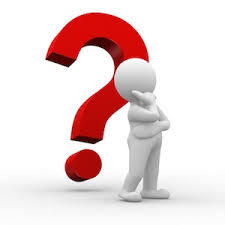 To Know Your Readers, Ask Them
To Know Your Readers, Ask ThemGetting to know your readers is one of the best reasons to run a blog that attracts people in your target market. Blogs are great for engaging directly with readers, for getting ideas from them, and for asking them questions.
You don't necessarily need a lot of readers, either. I would guess that only one in 50 readers will comment on a blog post. That means you can look at each comment as representing a bunch of readers.
Just talking to readers who are interested in your topic will provide you with lots of information about the obstacles they are running into trying to learn your field, and where they're getting stuck. If you're writing fiction, you can pose questions about the direction of the story or popular books on the market to get a feel for their individual tastes in a particular genre.
If you don't have a blog or enough readers to get a conversation going, you can engage with readers in other locations. Here are a few ideas:
Popular blogs in your field or genre - Taking part in discussions and reading through the comments on popular blogs will give you a lot of information.Discussion forums - There are specialty forums for almost all interests, and the questions people are asking in forums are a great source of valuable data.LinkedIn groups - This social networking site for businesspeople gets more popular every year. Find and join groups that are talking about your field and you'll have another great listening post.
 Simple Surveys
Simple SurveysYou can go beyond asking questions on your blog or taking part in discussions. One way is to use a simple survey tool like SurveyMonkey.com. You can open a free account and use its tools to construct a survey.
You can then either send people to the survey at SurveyMonkey or host it on your own blog or website. This is a terrific way to get people's thoughts on lots of things, and you can even ask what kinds of books they would buy, where their price sensitivity comes into play, what kinds of stories they prefer, etc.
Here are some tips for survey-taking:
Keep it short and to the point and more people will complete your survey.Include at least one open-ended question where people can write what they like.Don't forget to thank people for taking their time to answer the survey.Think about offering a free download like a useful PDF as an added benefit of completing the survey.
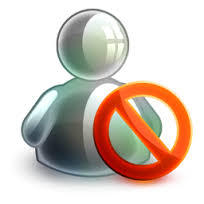 Going Offline for Research
Going Offline for ResearchYou don't have to be limited to online methods to try to get inside the minds of your readers.
A classic way of finding out your target audience is through niche publications like magazines and newsletters. Many of these have "letters to the editor" or advice columns for newbies, and those are both prime candidates for your research.
Clubs and professional groups are also outstanding places to meet and interact with people in your industry. A lot of the people who go to these meetings are new and looking for help and advice, making them great candidates for finding out what your audience is thinking about.
Although writing and publishing can seem like they take place in a vacuum at times, the more you connect with people in your area of interest - whatever it is - the more likely you are to create books that touch on the exact things people want to know and read.
And that's the way to successful publishing.
by Joel Friedlander
Published on November 22, 2015 02:42
November 21, 2015
A Year In The Making 37,000 Books Sold
Published on November 21, 2015 04:23
August 14, 2015
February 18, 2015
Maine Immortals - Free for Kindle - 2/18/2015 - 2/22/2015
Published on February 18, 2015 07:23
January 26, 2015
New Book Cover Same Great Book - Princess of the Indies
Published on January 26, 2015 08:31
January 7, 2015
All Of Author Joseph Demakis Books Are Free For The Week 1/7/2015 - 1/11/2015
Published on January 07, 2015 02:35
November 10, 2014
Book Release - The Ultimate Book of Quotations
Published on November 10, 2014 01:28




